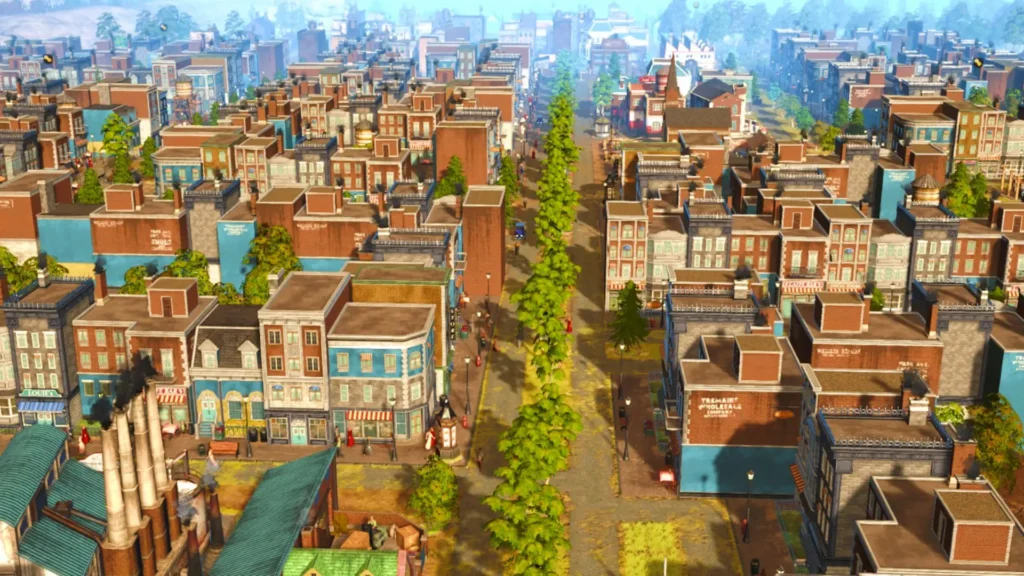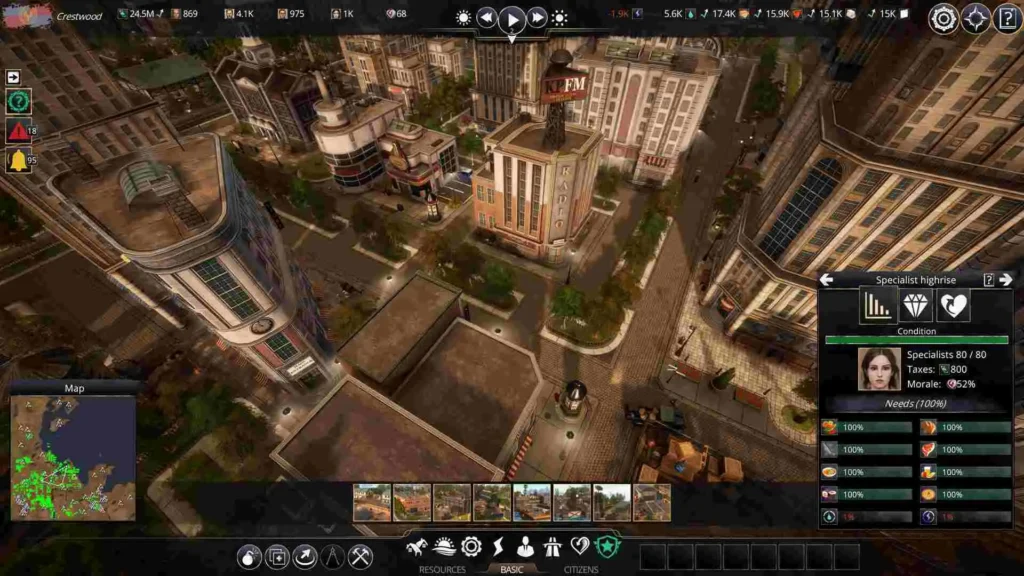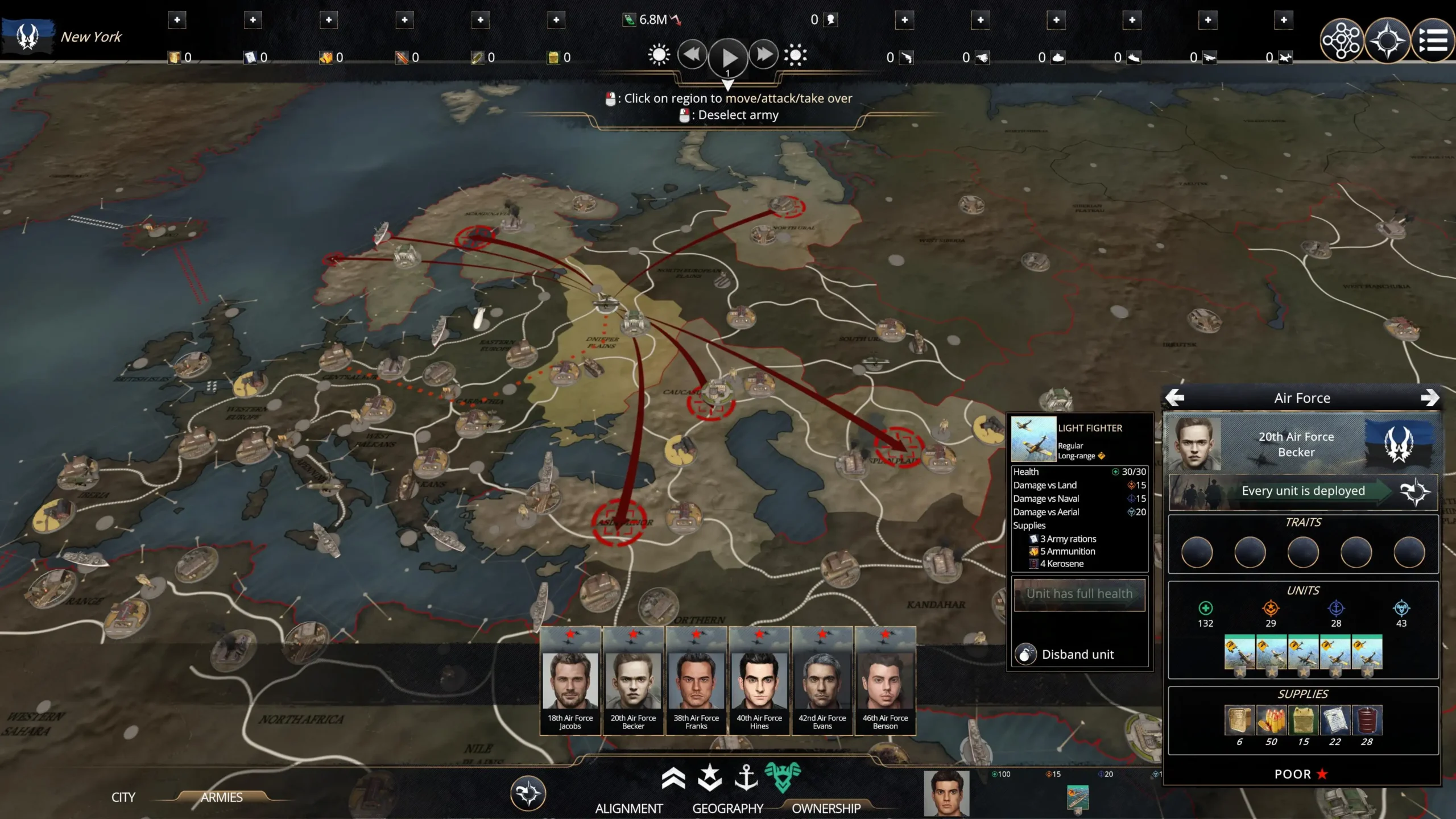Kaiserpunk opens with a captivating premise: society must be reconstructed from the ruins of an alternate timeline where World War I spiraled into a prolonged and devastating global catastrophe. It presents a post-apocalyptic world, shaped by the remnants of that brutal conflict. At its best, the game captures the energy of the Roaring Twenties through the lens of urban rebuilding, delivering moments of brilliance. However, a clunky, mismatched strategic layer and a variety of technical shortcomings – which might be more forgivable in an Early Access build rather than a full release – drag the whole experience down.
Rebuilding Civilization from the Ground Up
Players begin each session of Kaiserpunk by placing basic homes and small farms on a selection of flat maps inspired by real-world geography, from Seattle to Sydney. Early buildings feel like products of necessity, constructed from scavenged materials, often branded with fictional remnants of pre-war companies. There’s a strong visual identity to each structure, and the animation of hardworking citizens brings a rough charm to the early game.
As cities grow and citizens move up the social ladder, the settlements gradually evolve into elegant neighborhoods evocative of early 20th-century life. This transformation provides a satisfying sense of progress, with intricate production chains offering plenty of depth for those who enjoy resource management.
Kaiserpunk most closely resembles the Anno series in structure. Players start with simple agricultural setups and eventually progress toward manufacturing advanced consumer goods like radios and televisions. Urban development must cater to an increasingly demanding population, and players shape society by selecting policies that also alter the appearance of their central government buildings – a thoughtful touch that adds flavor to civic progression.
A World That Fails to Convince
Despite its strong start, Kaiserpunk struggles to maintain believability as its systems begin to unravel. Dozens of resources and unlockable buildings such as schools and hospitals suggest a detailed simulation, but these elements often feel superficial. The presence of heavy industry near residential zones has no apparent impact on livability – even for the wealthiest citizens. Pollution and other realistic consequences seem absent, and quality of life improvements are reduced to simply placing generic public buildings. The result is city layouts that feel artificial and disconnected from real-world urban logic.

The illusion breaks down further when players interact with the game’s strategic map. Here, the scale feels wildly inconsistent. While city-level management involves managing the luxury needs of a few hundred machinists, the global map compresses entire regions like Central Europe into single, abstract political zones – more reminiscent of a board game than a thoughtful simulation.
One could argue that if a strategic layer was necessary, the developers might have benefitted from narrowing the focus. Since the aesthetic leans heavily into British themes, concentrating on a post-apocalyptic version of the United Kingdom might have allowed for more coherence. The idea that these shattered communities would immediately resume geopolitical conquest, as though re-enacting a grand strategy game, feels tone-deaf and disjointed.

Strategic Battles That Undermine the Experience
Combat on the strategic map fails to impress. Turn-based battles play out with a cartoonish awkwardness that seems unintentional, while the underlying mechanics are clunky and opaque. Factors like terrain and supply can influence outcomes, but the overall design feels unfinished and difficult to read.
There’s a sense that Kaiserpunk began as a city builder rooted in a clever concept, and then had a half-developed war game awkwardly grafted onto it. Eliminating the global conquest mechanics entirely might improve the experience. Defense could be abstracted into city-building efforts rather than forcing players into a separate layer of gameplay that clashes with the core tone.
While diplomatic and scientific victory paths technically exist, they still require engagement with the world map. Avoiding military interaction isn’t a viable strategy if one hopes to achieve success through those alternative routes.
Balance and Bugs Tarnish the Vision
Another major hurdle lies in the game’s difficulty curve. On the standard Normal setting, the AI can feel unreasonably aggressive and efficient, often surpassing new players before they even establish a foothold. While a degree of challenge is welcome in a city builder, the steep demands of economic efficiency and rapid expansion can feel punishing, especially for those still learning the systems.
All of this is compounded by technical issues. In what is marketed as a finished release, Kaiserpunk lacks polish. Resource counters on the strategic map don’t update in real time unless the player exits and reopens it. The interface omits useful features, such as sortable columns in the resource screen, which becomes increasingly frustrating as the number of resources grows.

When checking on population needs, tooltips offer little detail, forcing players to manually inspect homes one by one. This becomes a tedious chore rather than an intuitive gameplay loop.
There are economic balance concerns as well. Constructing a single skyscraper filled with specialists can generate large profits regardless of citizen satisfaction, while addressing their actual needs becomes a costlier endeavor. In theory, happier citizens should contribute more in taxes – but in practice, the game often defies this logic.
More frustrating than anything are the persistent bugs. Leading up to the release, some players experienced corrupted save files after long playthroughs. While a last-minute patch may have fixed this, it speaks to the shaky stability of the build. One particularly strange incident involved a mysterious firebombing attack on a peaceful city, well before any factions had even been discovered. The source of the destruction remained unexplained – raising questions about just how finished the game truly is.
Final Thoughts
Kaiserpunk possesses bold ideas, a striking visual identity, and moments of joy within its city-building mechanics. The production chains can be engaging, and the vision of reconstructing a broken world has undeniable appeal. But in its current form, Kaiserpunk is marred by significant bugs, unpolished interface design, and a strategic layer that feels at odds with the core game.
With major updates and refocused design, there’s potential for Kaiserpunk to eventually fulfill its promise. For now, though, it remains a conflicted and frustrating experience – one that leaves behind the smoke of ambition, but not the fire of execution.
